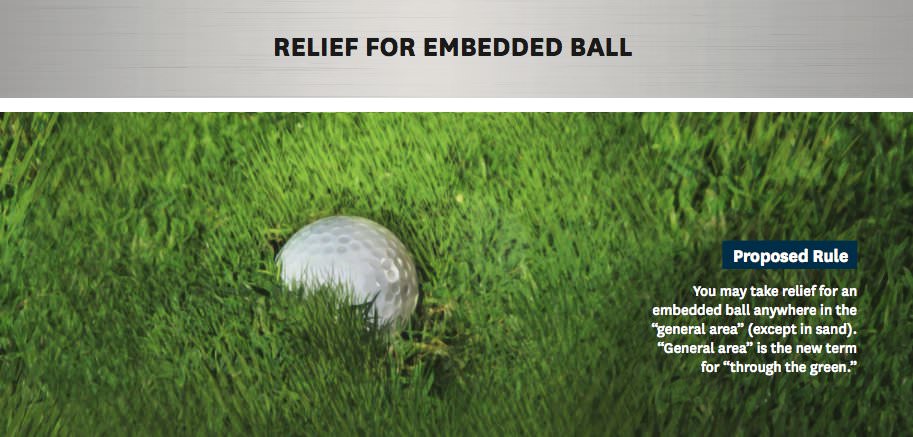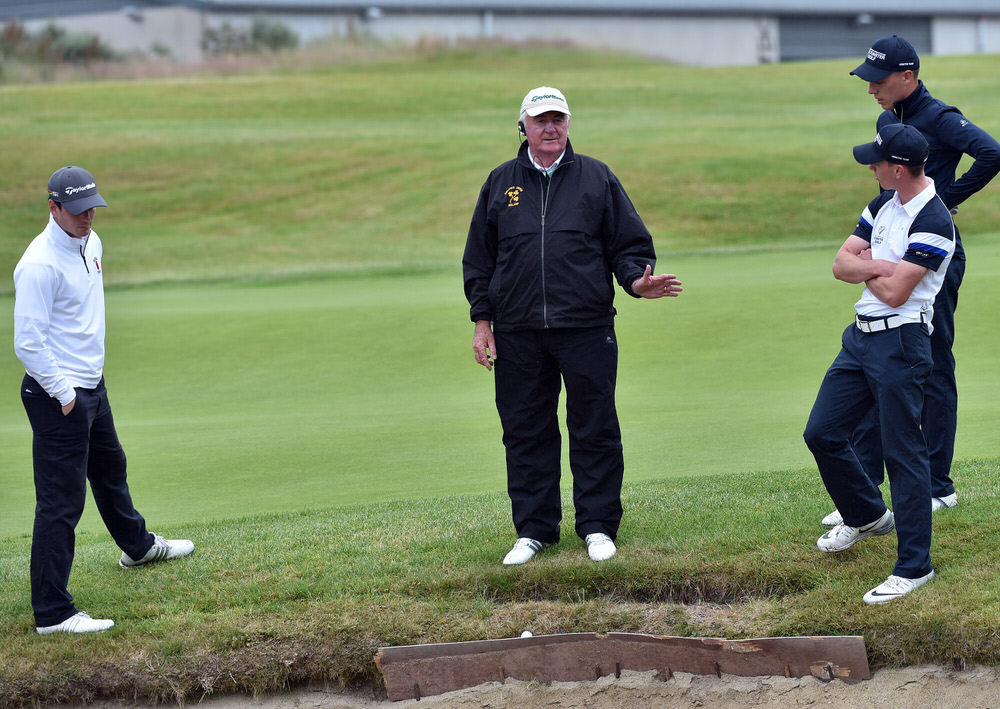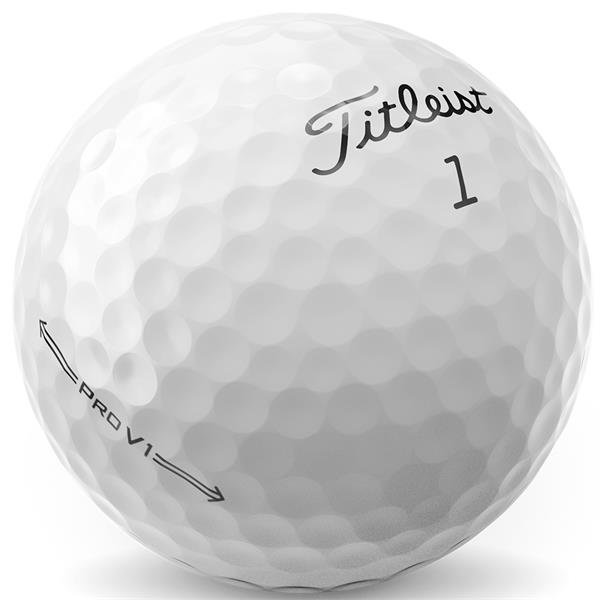Governing bodies propose changes to Rules of Amateur Status

James Sugrue in acton in the final of the Amateur Championship at Portmarnock Golf Club on 22 June 2019. Picture © Brian Keogh
The R&A and the USGA have announced proposals for significant changes to the Rules of Amateur Status that govern the game worldwide.
These proposals result from a modernisation initiative that has identified a clear need to bring the Rules up to date to reflect today’s global amateur game and ensure that the Rules are easier to understand and apply.
The proposed Rules, along with explanations to key changes, have been posted on www.RandA.org and www.usga.org and the organisations are now inviting feedback from golfers and stakeholders. Comments will be accepted until Friday, 26 March 2021 with the new Rules scheduled to be adopted on 1 January 2022.
A comprehensive review of the Rules of Amateur Status began in late 2017, focusing on three main goals: to ensure the Rules are in the best interests of the game, reflect the modern game and are easily understood and applied.
This review reaffirmed amateur golf's important position in the game and the value in maintaining amateur status Rules to safeguard all the ways golf is played and enjoyed.
The result is a set of Rules that redefine the distinction between amateur and professional golf and provide a condition of eligibility – amateur status – for amateurs who compete in golf competitions.
As part of the modernisation effort, it is proposed that the new Rules will identify only three acts that will result in a golfer losing their amateur status:
Accepting a prize in excess of the prize limit.
Accepting payment for giving instruction.
Accepting employment as a golf club professional or membership of an association of professional golfers.
To achieve this simplified approach, the following key changes are proposed:
Eliminating the distinction between cash prizes and other prizes.
Using the prize limit as the only way an amateur can lose amateur status through their play (meaning that entering or playing a competition as a professional would not, of itself, result in the loss of amateur status).
Removing restrictions from the Rules surrounding competitions such as long-drive events, putting competitions and skills competitions that are not played as part of a tee-to-hole competition; and
Eliminating all sponsorship restrictions.
Grant Moir, Director of Rules at The R&A, said, “The Rules of Amateur Status play an important role in protecting the integrity of our self-regulating sport but the code must continue to evolve. This is particularly so in relation to the modern elite amateur game, where many of the players need financial support to compete and develop to their full potential, and the proposed new Rules will give much greater scope for this.”
“Golf is unique in its broad appeal to both recreational and competitive golfers,” said Craig Winter, USGA Senior Director, Rules of Golf and Amateur Status. “We understand and value how important amateur status is, not only to those who compete at the highest level of the amateur game, but for the millions of golfers at every age and skill level who enjoy competitive events at their home courses. These updates should help simplify these Rules and ensure the health of the amateur game.”
The proposed new Rules are accompanied by an overview document and explanations that detail the rationale for why changes are being proposed and, in some instances, why they have stayed the same.
PROPOSED RULES OF AMATEUR STATUS FEBRUARY 2021
Rule 1: Purpose of the Rules
Amateur golf has a well-established tradition in the game, including a history of competitions limited to amateur golfers. The Rules of Amateur Status define who is eligible to compete as an amateur golfer.
Golf is largely self-regulating and to help protect the integrity of the game by minimising pressure on the Rules of Golf and the Rules of Handicapping, the Rules of Amateur Status limit the value of prizes an amateur golfer is allowed to accept based on performance in competition.
The Rules of Amateur Status also make a distinction between amateur golfers and non-amateur golfers who accept employment as a golf professional or give instruction for compensation.
Rule 2: Amateur Golfer
All golfers are amateurs unless they accept:
A prize above the [$750 USD] limit (see Rule 3: Prizes);
Payment or compensation for giving instruction (see Rule 4: Instruction);
Employment (including being self-employed) as a golf club or driving range professional; or
Membership of an association for professional golfers.
An amateur who takes any of these actions becomes a non-amateur and remains a non-amateur until being reinstated as an amateur (see Rule 5: Reinstatement as an Amateur Golfer).
Rule 3: Prizes
An amateur is allowed to accept any prize, including money or other currency, up to a limit of [$750 USD] in value, per competition, unless the national governing body has set a lower limit. For a non-monetary prize, the value of that prize is the price that the item is generally available to purchase from a retail source at the time the prize is accepted.
The prize limit applies to the following:
Any tee to hole golf competition involving a score for a hole, regardless of where that competition is played (for example, on a golf course or a golf simulator).
Any skills competition where the shot is played during a tee to hole golf competition
The total prizes accepted in a single competition or multiple competitions being conducted at the same
time (for example, scratch and handicap competitions). The prize limit does not apply to the following:
The value of trophies and other similar prizes.
Long drive competitions, target competitions, competitions involving specific skills, trick shots and
competitions that solely involve putting (unless the shot is played during a tee to hole golf competition).
A prize for a hole-in-one made during a round of golf on a golf course or during contests held outside a
round of golf, provided the length of the shot is at least 50 yards.
Gambling or wagering among individual golfers or teams of golfers. See the [“R&A and USGA Policy on
Gambling”].
Expenses to compete in a subsequent stage of the same competition (but for handicap competitions
with prizes to compete at subsequent stages, see the [“R&A and USGA Policy on Handicap Competitions with Prizes to Compete in Subsequent Stage of Competition”].
Rule 4: Instruction
Instruction means teaching the mechanics of swinging a golf club and hitting a golf ball. The Rules of Amateur Status do not apply to other forms of teaching or coaching (for example, physical fitness and mental aspects of the game).
An amateur who accepts payment or compensation for giving instruction, including as part of salaried duties, becomes a non-amateur.
But, an amateur may accept payment or compensation for giving instruction in the following circumstances:
As part of a programme that has been approved in advance by a national governing body (see [The R&A
and USGA guidelines on approved programmes]).
As an employee of a school, college, or camp, provided the time spent giving instruction is less than 50%
of the time spent in performance of all duties as an employee.
When the instruction is given in writing or online, and not to a specific individual or group.
Rule 5: Reinstatement as an Amateur Golfer
A non-amateur may be reinstated as an amateur by the applicable national governing body. Each national governing body has the sole authority to:
reinstate a non-amateur who lives within its area of authority,
require a waiting period prior to reinstatement, or
deny reinstatement.
A national governing body’s decision on reinstatement is final, subject to any appeal process established by that body.
Rule 6: Applying the Rules
The national golf union or association is the national governing body responsible for administering and applying the Rules of Amateur Status within its area of authority, including issues that arise in another area but involve a person or people who live within its area of authority.
If there is uncertainty or doubt about the application of the Rules, including whether a person is an amateur or non-amateur, the national governing body has the authority to make a final decision but it may also refer the matter to The R&A [USGA] prior to making a decision.
The national governing body’s decision about the application of the Rules is final, subject to any appeal process established by that body.
Proposed Rules of Amateur Status Explanations — Expenses
Current Rule: Rule 4 generally prohibits an amateur from receiving assistance in covering expenses related to golf competitions. However, receiving assistance is allowed in some cases, provided the expenses are reported and approved by a national, regional, or state golf association.
If an amateur plays at an elite level, the source of such assistance must not be promoted or advertised.
Several exceptions allow for the receipt of expenses, including expenses related to school or club teams and sponsored handicap competitions, as well as more general golf-related expenses.
Proposed New Rule: The proposed Rules would no longer include any restrictions on how an amateur covers his or her expenses, including whether such assistance is provided to the amateur in exchange for involvement in promotional or advertising activities (see Promotions and Advertising; Name, Image and Likeness)
Explanation for Proposal:
➢ While recreational golfers can manage their expenditures on the game by limiting how often they play, elite-level competitive golf requires a significant investment to cover costs, including entry fees, transportation and accommodation, instruction and practice, fitness and equipment.
➢ The current permission allowing an amateur to receive outside assistance was only introduced in 2012 and this was done in the belief that the limited restrictions that remained would eventually be removed entirely, as is currently being proposed.
➢ The change that was made in 2012 was based on the belief that, generally, the extent of any assistance being provided would self-regulate, meaning that an outside source would only cover what was reasonably required for the amateur to compete at the elite level, and this has proved to be the case.
➢ The elimination of restrictions does mean that a highly marketable amateur talent may receive significant support, in excess of golfing expenses. This type of exceptional case is considered a necessary consequence of allowing elite and other amateurs to access much more modest funds to assist their development in the game.
➢ The related elimination of restrictions related to promotional and advertising activities provides further rationale for no longer needing to regulate or monitor the source of an amateur’s assistance with expenses - if an amateur can receive direct financial compensation for promoting a company, regulating how expenses are paid is no longer necessary.
➢ Amateurs selected to a national squad or collegiate program are currently allowed to receive significant expenses that are not available to most amateur players.
➢ An amateur who fails to qualify for a national or collegiate program must currently find a way to cover expenses while being required to report the source to a national, regional or state golf union or association, but being unable to publicly reference the source of the assistance.
➢ It is believed that removing the current complex reporting procedures and restrictions would allow all amateurs the same opportunity to seek assistance with their expenses and help introduce additional equity in the amateur game.
Proposed Rules of Amateur Status Explanations — Reinstatement
Current Rule: Rule 9 establishes the process by which a non-amateur can apply for reinstatement, as well as recommending guidelines for national governing bodies handling such applications.
Rule 9 also provides:
➢ Recommendations that non-amateurs who have gained national prominence or who have been reinstated twice are not normally eligible for reinstatement, and
➢ A framework for applicants who are awaiting reinstatement by clarifying they are not amateurs until the process is completed, but may have some additional playing opportunities at the discretion of a committee or tournament organizer.
Proposed New Rule: The important administrative processes contained in the current Rule would remain largely unchanged in the proposed Rules.
However, the minimum recommended waiting period has been reduced from one year to six months, with a national governing body left to assess whether additional time would be appropriate based on the nature of the applicant’s history as a non-amateur (such as adding time based on a review of the applicant’s playing record as a non-amateur).
Explanation for Proposal:
➢ The reinstatement process provides a vital function in maintaining the distinction between amateurs and non-amateurs, and ensures golfers are not able to arbitrarily move back and forth between amateur and non-amateur status.
➢ A waiting period is assigned to each applicant (see the guidance note below) to allow for an certain period of time between a player’s last action as a non-amateur and his or her reinstatement date and becoming eligible to compete as an amateur.
➢ This waiting period helps ensure amateurs give pause for thought before deciding to become a non-amateur (for example by accepting a prize above the prize limit), knowing that such an act will require a waiting period should they decide to apply to regain their amateur status.
➢ Lowering the minimum waiting period will allow many golf professionals and instructors the opportunity to regain amateur status more quickly, while also providing each national governing body the discretion to add additional time for applicants who have achieved success as demonstrated by their playing record as a non-amateur.
➢ This provides a more logical balance as compared to the current recommendations that treat all actions the same (currently, a two-year waiting period for a career golf professional is recommended regardless of his or her playing success).
➢ The application process itself provides a necessary framework to ensure each national governing body has an opportunity to review each application and then apply what it considers to be the appropriate waiting period based on the circumstances.
➢ Denying reinstatement would remain an option but is applied in limited circumstances only, such as when a player is considered to have gained national prominence.
➢ A decision to deny reinstatement could also be applied to an individual seeking a third reinstatement, but the applicant’s national governing body would normally review the applicant’s entire application history and the circumstances of previous reinstatements.
As the governing bodies’ guidelines on reinstatement are not currently intended to form part of the new Rules of Amateur Status, the following draft guidance note is likely to accompany the Rules:
Reinstatement Guidance Note:
The Rules of Amateur Status make a distinction between amateur golfers and non-amateur golfers. Consequently, there needs to be a reinstatement process for non-amateur golfers who wish to regain their amateur status.
The reinstatement process should involve the non-amateur submitting an application for reinstatement to their national governing body, with the national governing body requiring a waiting period prior to reinstatement or, in exceptional cases, denying reinstatement.
It is recommended that the minimum waiting period for reinstatement is six months, but a national governing body may wish to increase the period based on, for example, an applicant’s success in terms of prizes won in competition.
In deciding the waiting period for reinstatement, the national governing body is not required to consider the length of time the applicant was a non-amateur.






